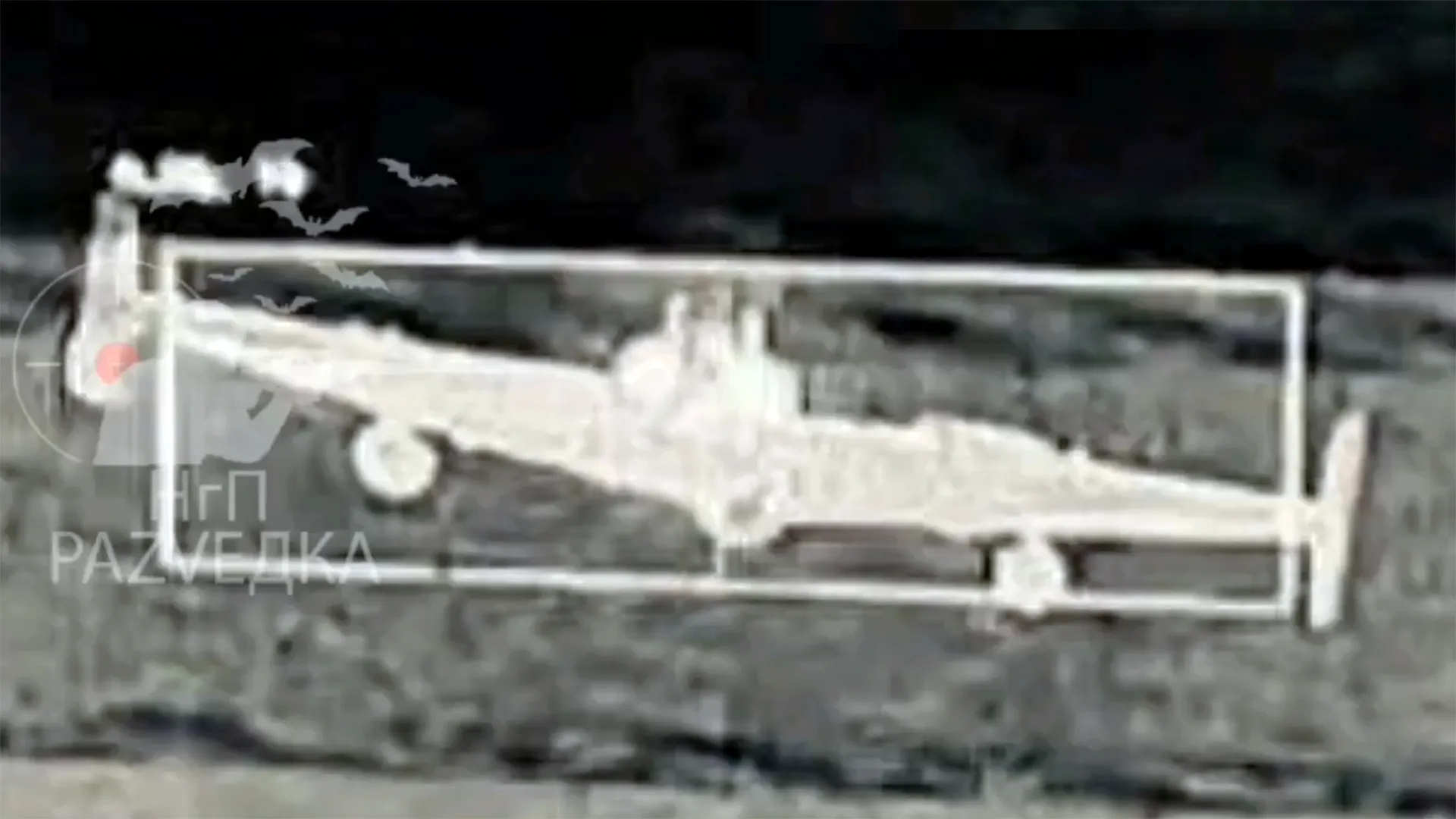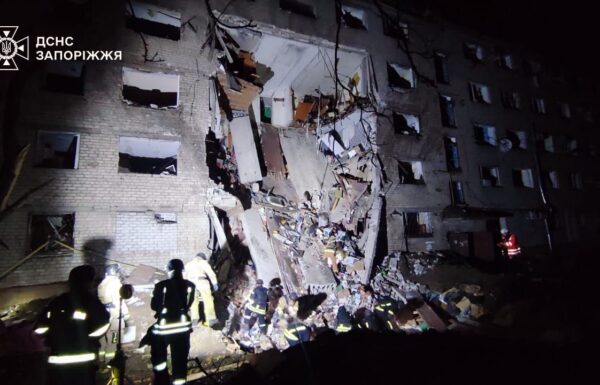On Sunday, August 10, 2025, the NgP raZVedka channel on Telegram published a video showing a Russian Geran/Shahed series loitering munition carrying two PTM-3 anti-tank mines, configured for mining enemy supply routes.
 Photo: NgP raZVedka via Telegram
Photo: NgP raZVedka via Telegram
On August 5 of this year, the National Police of Ukraine reported that in Sumy Oblast, under the wings of a downed Geran-2/Shahed-136 loitering munition, underwing pods carrying light mines had been discovered.
Now, the Russians have confirmed this by publishing video footage from the UAV’s onboard sensors showing the release of multiple PTM-3 anti-tank mines onto public roads somewhere in Ukraine. The footage documented the disabling of at least two vehicles. It was stated that new methods for real-time remote mining of supply routes had been quietly tested, that the solution proved effective, and that Ukrainian forces reportedly suffered significant losses. It was further noted that the guidance system would be improved and the tactics of use expanded.
The PTM-3 (ProtivoTankovaya Mina-3) is a Soviet/Russian scatterable anti-tank mine with a shaped charge and a self-destruct mechanism (set for 16–24 hours), designed to target armoured vehicles. The shaped charge effect is generated on five surfaces of the mine (four sides and the bottom), and its 330 × 84 × 84 mm casing is made of pressed steel with scored grooves. The mine’s weight is 4.9 kg, or 8.5 kg with its dispenser. It contains 1.8 kilograms of TG-40 explosive, a mix of RDX and TNT. The mine can be used in temperatures from –40°C to +50°C and has a shelf life of 10 years. It is equipped with a BT-06 magnetic fuze that reacts to changes in the magnetic field, for example, when a vehicle passes over it. Arming occurs in two stages, pyrotechnic and mechanical, and takes about 60 seconds after the thermal sensor is activated.
Previously, the platforms used for dispersing these mines included BM-30 Smerch, BM-27 Uragan, and BM-21 Grad multiple rocket launchers; VSM-1 helicopter-mounted systems on Mi-8T/MT helicopters; UMZ scatterable mine-laying vehicles; or portable PKM mine-laying kits. The mine was introduced into service in 1951.
Russian drones dropping anti-tank mines on roads. pic.twitter.com/pnS5jacNC1
— Clash Report (@clashreport) August 10, 2025
Using a Geran-2 (Shahed) long-range strike UAV to drop just two PTM-3 anti-tank landmines on frontline roads reflects the pathetic failure of Russia to develop a heavy lift drone fleet.
Ukraine has used its large heavy drone fleet to precision place many thousands of PTM-3s.
1/ https://t.co/ESaWGlwDqR pic.twitter.com/dGvejUAgtf— Roy🇨🇦 (@GrandpaRoy2) August 11, 2025
If the Russians start to use this system to drop landmines deeper into Ukraine, they would need to fly very low to have any chance of one landing on a road.
This will restore the use of mobile ground fire teams, sidelined by the move of Geran-2s to maximum altitude.
3/ https://t.co/Tkhg6gsgrY pic.twitter.com/9QnAcnRoNm— Roy🇨🇦 (@GrandpaRoy2) August 11, 2025































